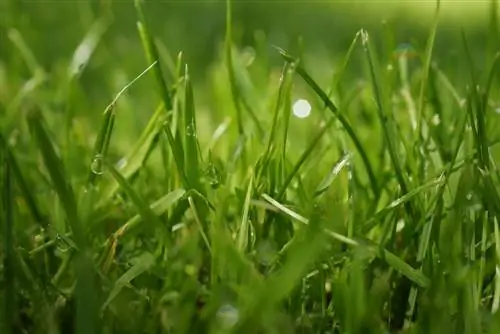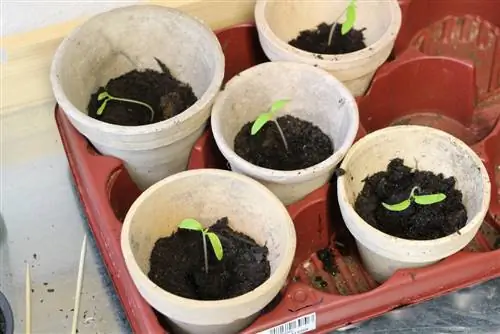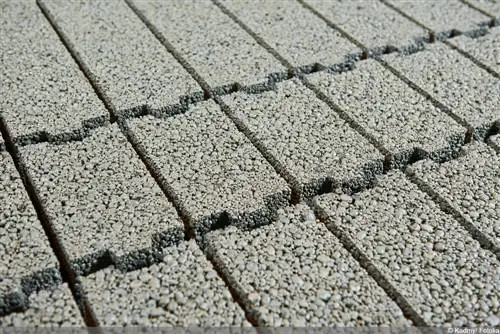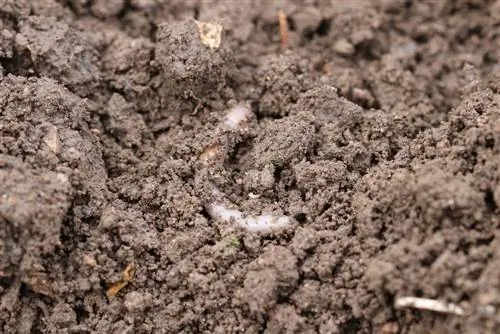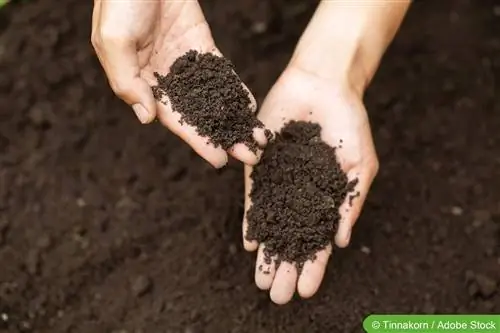- Author admin [email protected].
- Public 2023-12-17 03:39.
- Last modified 2025-01-24 12:45.
A green, densely sprouting lawn is what many garden owners want. But this dream will only come true if the condition of the earth is right. If the grass roots are stuck in clayey soil, the lawn can quickly become unsightly. Waterlogging and a lack of ventilation are not optimal growing conditions. But these disadvantages can be mitigated. Read here how you can get the clay soil into a lawn.
The properties of a clay soil
There are also subtle differences in clay soil. The more clay the soil contains, the more pronounced the associated properties are.
- good water storage capacity
- high compactability
The stored water provides the lawn with moisture even on rain-free days. However, if the soil is heavily compacted, the disadvantages increase:
- Rainwater can no longer seep away easily
- Waterlogging is the result
- causes permanent root damage
- only a small amount of air gets into the ground
- the grass but also microorganisms suffer from it
In spring, the soil, which is saturated with moisture, has difficulty warming up, which leads to a delayed start to growth. During a long dry period, however, the earth becomes rock hard. Water then has difficulty penetrating and reaching the roots. Yellow, dry spots appear in the lawn. Conclusion: The lawn does not grow evenly and neatly on clay soil.
How to recognize a clay soil
The exact nature of the soil can be clarified with a soil analysis. However, even a layperson can easily recognize the simple fact of whether it is clay soil. A little moist soil is enough for this. Can this be easily formed into a sausage without it crumbling and falling apart? If yes, then you are holding clay soil in your hand.
Improving clay soil for the lawn
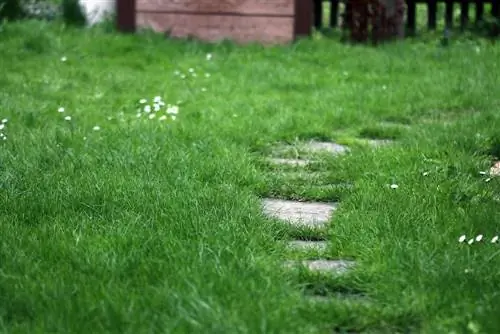
Clay soil in the garden is no reason to forego a beautiful lawn. A complete floor replacement is of course conceivable, but it is also labor-intensive and costly. This option is therefore rarely the preferred solution. If a clay soil is known as such, the undesirable properties can first be counteracted through soil improvement measures. For this purpose, suitable components are added to the heavy clay soil:
- Sand
- Compost
- or a mixture of both
If all improvement measures do not lead to the desired result, for example because the soil is too compacted, the top layer of soil must be replaced with topsoil. The replacement should be 10-30 cm deep.
Tip:
If puddles of water form on the lawn after a rainfall and remain standing for a long time, this is a sign of heavily compacted soil.
Clay soil benefits from grains of sand
Sand, unlike clay, is very permeable. Sandy soil is loose and water can seep away easily. Sand is therefore ideal for loosening up heavy clay soils.
- Sand makes the soil loose
- counteracts compaction
- Water can easily seep away
- is possible before sowing the lawn
- can also be incorporated later
Loose clay soil with sand before sowing
In order for heavy clay soil to be transformed into fine and loose soil, a lot of welding is required. It's best to proceed in three steps.
- Dig up the clay soil first.
- Spread sand evenly on top. About 4 cubic meters per 100 square meters of area.
- Then lift the sand under.
Only after the clay soil has been improved can the lawn be sown on it.
Note:
Building sand is not suitable for loosening clay soils. Sanded river sand with a grain size of approx. 2 mm is ideal.
Incorporate sand into existing lawns

The soil of an existing lawn can also be subsequently loosened up with sand. Special lawn sand is available commercially, but play sand is also ideal. So that the sand can penetrate deep into the clay soil and loosen it up, it must be prepared beforehand.
- Mow the lawn short, 3-4 cm height is optimal.
- Scarify the lawn to remove moss and old clippings.
- Remove this felt with a rake.
- Apply the sand evenly to the lawn.
- The sand gradually seeps into deeper layers of the earth.
Tip:
The sand can be spread by hand. However, a more even result can be achieved with a spreader.
The ideal time for this measure is spring, when grass growth begins again. This gives the lawn the opportunity to quickly recover from scarifying. Depending on how strongly the clay soil is already compacted, this so-called sanding should be repeated in several consecutive years.
Enrich clay soil with compost
Compost is also suitable for loosening clay soil. It is worked into the clay soil and develops its full effect over time.
- The resulting cavities provide space for air and water
- Lawn is better supplied with these important elements
- contains microorganisms and worms
- these help loosen the soil
- Compost is also a good fertilizer for the lawn
- can also be brought onto the lawn afterwards
Tip:
The compost should be well seasoned and also be finely sieved before spreading.
Making compost is easy and cheap. Green waste or vegetable kitchen waste that occurs in the burrs can be used for this purpose. Alternatively, you can buy bark humus in garden centers.
loose up clay soil for new sowing by frost
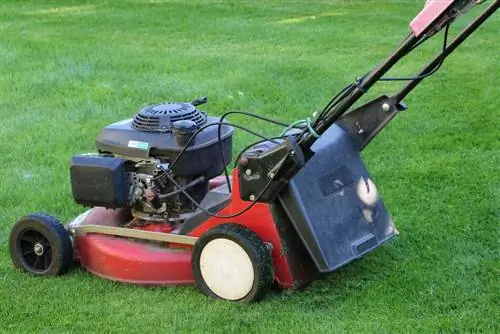
If the lawn is not to be sown until the following year and the area to be greened still has a “bare” winter ahead of it, the frost can be a useful helper in the meantime. You can let time and the sub-zero temperatures work for you, provided the weather cooperates.
- Dig up the future lawn area with a spade. This allows water to penetrate the earth better.
- The water that has penetrated freezes, expands and breaks up the clods of earth. The result is a fine, crumbly soil texture.
- Apply a thin layer of sand in spring.
- Then sow the seed.
Deep loosening and drainage
If the lawn grows on heavily compacted clay soil, it may be that neither incorporated sand nor compost will bring the desired success. In this case, deep loosening can be carried out by a specialist. Special machines are usually required for this. In addition, drainage built into the ground can ensure constant water drainage.
- special drainage pipes are laid underground
- in a bed of sand and gravel
The gravel bed acts like a tub in which the water accumulates. This backwater is drained away through the pipes.
Prevent compaction
If a lawn growing on clay soil is subjected to heavy use, compaction is inevitable over time. You can counteract this a little if you protect the wet lawn and avoid walking on it if possible. Because this is precisely when the risk of compaction is greatest.

